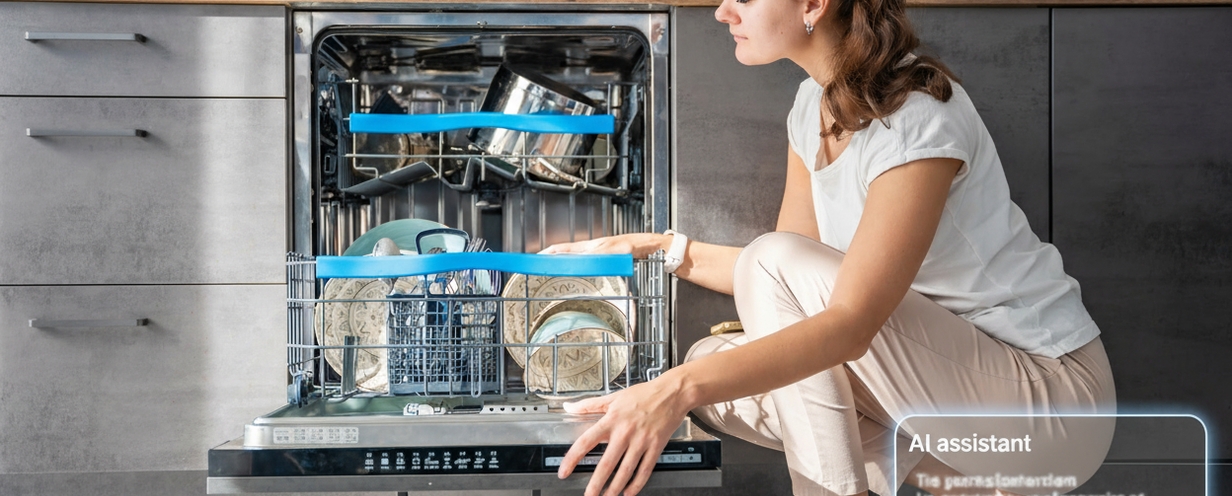
AI-assisted shopping: The new customer journey is emerging

Summary
Generative AI chatbots are changing the ways people work, so it shouldn’t be surprising that they’re also changing the way they shop. AI bots are altering the shopping journey for many consumers, replacing traditional web searches and supplementing (but not fully replacing) the information provided by retailers and manufacturers. The changes give companies an opportunity to reach consumers more directly and deeply–but only if they optimize their practices for the AI-driven journey.
The study: How do consumers use AI to shop for durable goods?
We wanted to learn how people use AI when shopping for a product that’s a considered purchase, something that they wouldn’t usually buy on impulse. The questions we wanted to answer included:
Is AI helpful in a considered purchase?
How do people use AI to shop?
Is AI changing the way people shop?
What are the implications for companies that build and sell durable goods?
In our study, we asked consumers to use AI to help them shop for a dishwasher. Using the UserTesting platform, we recorded their faces, voices, and computer screens as they shopped using their favorite AI chatbots. We also asked them followup questions about what they liked and disliked about the process.
What we learned: The journey is changing, but is not being replaced
The study showed that AI chatbots are changing the shopping journey for a considered purchase, but are not replacing it.
People used AI to initiate the search and do early product comparisons, but many consumers still wanted to visit a familiar retailer for the final purchase decision, and they were disappointed when AI sometimes gave them incorrect information. Interestingly, though, the bad information did not drive them away from using AI, it just made them more discriminating about the tasks they used AI for.
Below are some clips of typical comments from the participants:

Here are more details on what we learned:
Adoption of AI for considered purchasing is still in its infancy. Many people are using AI for work tasks, and had not thought of using it to research a personal purchase. This is consistent with consumer studies from Pew Research, which have shown somewhat higher AI adoption at work than in personal lives. Although the idea of this sort of shopping was new to many consumers, once they tried it they generally liked the process and saw value in it. So we should expect more adoption of AI bots for shopping in the future.
Virtually everyone felt gen AI was useful in the shopping process, and several people said they liked the way it customized information to their needs.
During the search, the AI bots often created comparison tables including pictures of the dishwashers and bulleted lists of features, even if they had not been asked to make tables. These tables were very popular with the participants, and several said they were surprised that the AI did it for them.
Users liked the AI-generated product tables because they could customize the points of comparison, rather than relying on static comparison charts online, which people said often have irrelevant or incomplete information in them.
AI chatbots will not change the journey for everyone. Some participants said they would use AI in the future for this sort of shopping. As one put it, “bye Google, you’re obsolete now.” But others said they would stick with their traditional shopping methods (searching the web, reading reviews, and so forth).
Different people chose different AI journeys. People used the AI bots in subtly different ways.
The initial prompts were different. Some wrote a very short generalized query asking the AI to guide them (“Help me shop for a dishwasher”), while others took charge with long scenarios telling the AI exactly what they wanted to know (“I have a family of five and poor wiring in my home and need the price to be under $500 and…”)
Many people shopped in two phases. First, they had the AI help them identify the brand and model they wanted, then they used it to look for a retailer and pricing.
The retailer still matters to many people. We expected that people would want to shop for the best deal once they had chosen a model, and indeed some participants were open to using AI to pick any store that had the best price. But many said they would only buy a dishwasher from one of the leading home goods chains, usually Lowes or Home Depot, and instructed the AI to focus only on products available through those channels.
The bots sometimes flubbed pricing, but users were surprisingly practical about it. In a few cases, the bots made mistakes. The most common was that prices were misreported, or they changed during the query (for example, a product quoted at AU$1,198 at one point was quoted at about AU$1,499 later). When asked about those differences, the chatbot’s explanations sounded like excuses to the participants, which hurt the bot’s credibility. However, these mistakes did not make the participants distrust AI shopping in general. They just decided that they needed to double-check its price quotes.
GUIDE
Designing AI-powered shopping experiences for the next generation of commerce
What to do: manufacturers and retailers
Start preparing now. Although AI-assisted shopping for durable goods is just getting started, retailers and manufacturers should not be complacent about it. AI experimentation is increasing rapidly, and users in our study found a lot to like about AI-assisted shopping. You should assume that your customers’ journeys will change significantly in the next few years, and prepare now.
Make better comparison tables. One area that needs immediate work is comparison tables. Our study showed that AI bots are extremely good at creating comparison tables on the fly, customized to the features that consumers want to compare. The old static comparison charts displayed on many websites are now effectively obsolete. If you don’t rework your charts to be fully customizable, you should expect to lose that part of the journey to the bots.
Create a conversational experience. AI chatbots enable the user to have the help of a friendly advisor throughout the shopping process. Some people use the bot as a research assistant, while others use it more as a coach and guide. In both cases, AI is creating a bespoke shopping process that previously could be done only by a human concierge. Retailers and manufacturers should think very hard about what this new experience means to their businesses. Specifically:
Do you want to allow the major AI bots to be this assistant, or do you want to provide that assistance yourself?
A related question is whether customers will even be willing to use your bot. They may prefer to use the general-purpose bot they’re already using for other tasks. Be honest with yourself about your role in the shopping process. Will customers be willing to put you at the center of their early exploration of products? If not, when in the purchase process do you think you can get them to visit you (either online or by coming to a store), and what do you need to do to make sure you’re ready to serve them at that step in the process?
One of the most common consumer complaints about big store retailers is “I can’t find a sales associate when I want one.” Could AI fill that need? What parts of that personal interaction should be done online before the customer enters the store, and which parts should be after?
How would a hybrid AI/human sales process in stores look? Can AI accelerate the slowest parts of the purchase process and smooth the points where there’s the most friction today?
ON-DEmAND WEBINAR
Pulse Report: Retail Q2 2025 overview
Plan for two-step journeys. Most of the participants in our study had two very distinct stages in their shopping process: picking the brand and model, and then finding a retailer and looking at price. How can you help them in each stage, and can you smooth the handoff between them?
Ensure that the leading AI bots have accurate product and pricing information. There are already a number of standards for handing off product and price information to the web search companies, but AI is a different beast because it’s prone to making up information or misinterpreting it when it can’t find what it needs. It’s important to be sure that your product specs and pricing are in places where the bots can find them. Steps suggested by Chat GPT itself include:
Centralize and clean product data by implementing a product information management system, including price, availability, specs, images, etc. Update that information immediately whenever it changes.
Use Schema.org markup to add structured data about price, availability, etc. to your website. Test with Google’s Rich Results Test to ensure bots can parse the data.
Keep your data feeds current in Google’s Merchant Center, Amazon Seller Central, and other marketplaces you use. Use GS1 standards for consistency, and refresh the feeds at least daily.
Consider providing an API that exposes product catalog info.
Optimize your web content for AI crawlers and searches. Ensure pages are crawlable and prices are prominent.
Adopt Model Context Protocol to let AI bots query your product information directly.
Consider doing direct API integrations, where available, with ChatGPT, Google AI, Copilot, and Anthropic. These would enable you to push current product data directly to the bots.
Regularly run test queries on ChatGPT, Gemini, Claude, and Copilot to ensure they are reporting information about your products correctly.
Monitor your support channels to see if customers report getting inaccurate product information from the bots.
What to do: AI chatbot companies
Help people discover that they can use your bot to help with shopping. Many people told us they liked the AI-assisted shopping experience, but they hadn’t ever thought of trying it before our test. This is a common situation we find with AI chatbots–they are capable of doing far more than most people realize.
Discovery of new uses for AI is very difficult for many people because the interface relies on the users to imagine what they could do. You need to take responsibility for educating people about what they can do with your product, or finding a way to make those capabilities easily discoverable.
Make sure rapidly-changing information like pricing is accurate. It’s great to give companies the APIs and other procedures to share pricing and other information with you, but asking them to do all the work is dangerous, because when your bot misreports product information, they will blame the bot, not the manufacturers or retailers. You will be better off if you can find more reliable ways to detect and verify current pricing and other specifications.
Support the different journey types that people use when shopping. Some people want a guided concierge-like experience, others want more of a research assistant. You should make it easy for them to understand that your bot can handle both interactions, and give them an easy way to tell the bot which approach to shopping they want.
Embrace the channel preferences of users. Many people want to make durable goods purchases through trusted retailers. Unfortunately, this is where the bot-assisted shopping sometimes broke down in our tests. You should find ways to create tight ties with the leading retailers, so you can do a seamless handoff of the customer to them.
This study is part of UserTesting’s ongoing analysis of how AI is changing business. For more information, check out our guide on how to create effective AI products.
Methodology
Using the UserTesting platform, we recruited ten random adults in the US, Canada, and Australia. They were required to be employed full time and to have a free or paid account on at least one generative AI chatbot. Participants were told to shop for a new dishwasher using their favorite generative AI chatbot, and then were asked a series of questions about the experience. Most participants used ChatGPT, but several used other AI chatbots. Participants consented to have their video included in this report. The study was conducted in summer 2025.
Additional resources





